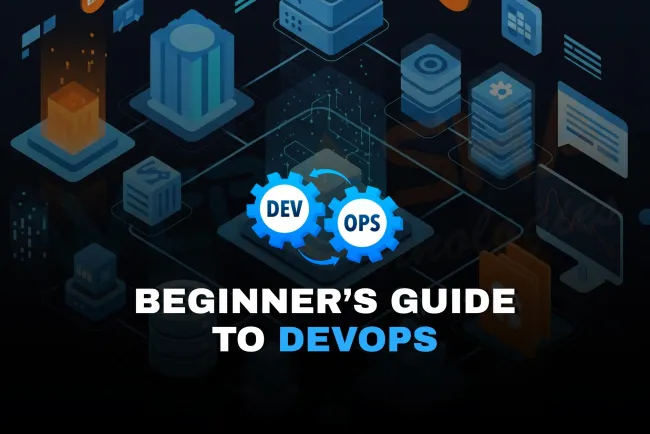How GitOps and Secure Infrastructure as Code (IaC) Are Redefining Cloud Security in 2025
Learn how combining GitOps with Secure Infrastructure as Code (IaC) brings automation, compliance, and security into cloud-native workflows. Explore real-world tools, benefits, and how policy-as-code helps reduce misconfigurations and breaches.

In today’s fast-paced cloud-native world, Infrastructure as Code (IaC) is how teams build and manage their infrastructure—automatically, quickly, and at scale. But as we speed up deployment, how do we keep security from falling behind?
That’s where GitOps + Secure IaC comes in. Together, they’re changing how developers and security teams manage infrastructure—making it not only automated but also secure by design.
Let’s break it down in simple terms, with real examples and insights that matter.
What Is GitOps? Why Is It Popular Now?
Think of GitOps as a way to use Git (your code repo) not just to manage app code, but also to manage your entire infrastructure.
With GitOps, your infrastructure—servers, networks, databases—is defined in code and version-controlled in Git. Changes happen through pull requests, and everything is deployed automatically.
Example:
You want to update your Kubernetes cluster’s configuration? You don’t touch it manually. You make a code change in Git, create a PR, and let automation take over.
What Is Secure Infrastructure as Code (IaC)?
IaC lets you define cloud resources in files (like Terraform, CloudFormation, Pulumi). But Secure IaC means you're doing it with security baked in—before anything is deployed.
This involves:
-
Policy-as-code: Security rules written as code.
-
Validation tools: Scanners that check for misconfigurations or risks.
-
Compliance automation: Code that meets regulatory standards like HIPAA, GDPR, etc.
Why Security in IaC Matters More Than Ever
As IaC adoption skyrockets, so do risks. A single misconfigured S3 bucket or open firewall port in code could expose thousands of records.
Now imagine that misconfiguration is in Git, gets approved, and deployed everywhere instantly.
That’s not just a mistake—it’s a breach waiting to happen.
How GitOps and Secure IaC Work Together
When you combine GitOps with Secure IaC, you get automated, versioned, and security-validated deployments. Here's how it flows:
Step-by-Step Flow:
-
Write infrastructure code (e.g., Terraform or Helm).
-
Push code to Git — triggers CI/CD.
-
Security tools scan the code using policy-as-code rules (e.g., Open Policy Agent).
-
If secure, the pipeline proceeds with automatic deployment.
-
Audit trails in Git show who changed what and when.
Real-World Tools That Enable This
-
Terraform + Sentinel – Adds policy checks to Terraform.
-
OPA (Open Policy Agent) – Used with Kubernetes and GitOps to enforce policies.
-
Terraform Cloud, Pulumi, or Spacelift – Offer secure, GitOps-native IaC workflows.
-
FluxCD or ArgoCD – GitOps tools for continuous delivery into Kubernetes.
-
Checkov, tfsec, KICS – Static analysis tools for finding security flaws in IaC.
Benefits of GitOps + Secure IaC
| Benefit | Why It Matters |
|---|---|
| Consistency | Everything is deployed the same way every time. |
| Security built-in | Security checks happen before deployment. |
| Auditability | Git tracks every change, who made it, and when. |
| Faster, safer delivery | Dev and SecOps don’t block each other—they collaborate. |
| Rollbacks made easy | Revert bad changes with a simple Git rollback. |
Common Security Pitfalls in IaC (And How GitOps Helps)
| Pitfall | Risk | GitOps + Secure IaC Fix |
|---|---|---|
| Open ports to the internet | Exposure to attacks | Enforce port restrictions via policy |
| Default credentials in code | Credential leaks | Secrets stored in vaults, not code |
| Overly permissive IAM roles | Privilege escalation | Auto-check roles against least-privilege rules |
| Missing encryption settings | Data breaches | Pre-deployment scans catch misconfigs |
Real-World Use Case: GitOps + Secure IaC at Work
A fintech company uses Terraform + GitHub + ArgoCD. Every change is pushed to GitHub, scanned by Checkov and OPA, then deployed using ArgoCD.
-
Developers can move fast.
-
Security is automated.
-
Compliance reports are generated from Git history.
The result? Fewer incidents, faster delivery, and happier auditors.
Getting Started: Best Practices
-
Adopt Git as your single source of truth for both app and infra code.
-
Use static analysis tools to scan IaC for security risks.
-
Write and enforce policy-as-code (e.g., deny all open S3 buckets).
-
Use GitOps tools like ArgoCD or FluxCD to automate deployments.
-
Secure your Git workflows: enforce PR approvals, protect main branches, and audit all changes.
-
Educate teams to treat infra code like application code—security included.
Conclusion
GitOps and Secure Infrastructure as Code aren’t just buzzwords—they’re critical to modern cloud security. By shifting security left (into the development phase) and automating deployments, organizations can move fast without breaking things.
Security doesn’t have to slow you down. With GitOps + Secure IaC, it becomes your built-in safety net.
FAQ:
What is GitOps in simple terms?
GitOps is a way to manage and automate infrastructure using Git as the single source of truth. It lets developers control deployments through version-controlled repositories.
How does GitOps help with security?
GitOps improves security by keeping infrastructure changes trackable in Git. Every change can be reviewed, approved, and audited before it goes live.
What is Infrastructure as Code (IaC)?
IaC is the process of managing infrastructure (like servers, networks) using code instead of manual processes. Tools like Terraform and Ansible are used for this.
What is the difference between IaC and GitOps?
IaC is about writing code for infrastructure. GitOps adds automation and continuous deployment using Git and tools like ArgoCD or Flux.
Why is secure IaC important?
Secure IaC prevents security risks such as exposed secrets, misconfigurations, and open ports that can lead to breaches in cloud environments.
What does ‘declarative security’ mean in GitOps?
Declarative security means defining the desired security state (like firewall rules or policies) in code, which GitOps enforces automatically.
How does policy-as-code help in cloud security?
Policy-as-code allows you to write and enforce security policies in code, ensuring every deployment follows organizational security rules.
Which tools are commonly used for GitOps?
Popular GitOps tools include ArgoCD, Flux, Jenkins X, and GitLab CI/CD.
Which IaC tools support secure deployment?
Terraform, Pulumi, AWS CloudFormation, and Ansible are widely used IaC tools with features that support secure infrastructure.
What is Open Policy Agent (OPA)?
OPA is an open-source tool that helps enforce policies-as-code, ensuring that all IaC or GitOps deployments meet defined security standards.
How does GitOps help with compliance audits?
GitOps logs every change, making it easy to track who did what and when — helpful for audits and compliance.
Can GitOps prevent misconfigurations?
Yes, GitOps can detect configuration drift and restore systems to the desired state, preventing unauthorized or insecure changes.
What is drift detection in GitOps?
Drift detection checks if the live infrastructure matches what’s defined in Git. If not, it automatically fixes it or alerts the team.
How does GitOps improve incident response?
By keeping all configurations in Git, it’s easy to roll back to a known good state if something breaks or a security incident happens.
What are the risks of not securing IaC?
Risks include exposed data, compromised cloud accounts, insecure networks, and the possibility of attackers exploiting configuration flaws.
What are common security vulnerabilities in IaC?
Some include hardcoded secrets, overly permissive roles, unencrypted data, and open security groups.
How can I scan IaC for vulnerabilities?
You can use tools like Checkov, tfsec, KICS, and Terrascan to automatically detect security issues in IaC code.
Is GitOps only for Kubernetes?
While GitOps is popular with Kubernetes, it can also be used with other infrastructure and environments.
What is a secure CI/CD pipeline?
It’s a deployment pipeline where code is scanned, tested, and verified for security risks before being pushed to production.
Can GitOps be integrated with DevSecOps practices?
Yes, GitOps fits perfectly with DevSecOps by automating security checks and promoting secure deployment practices.
What are some best practices for secure IaC?
Use code reviews, avoid hardcoded secrets, scan for vulnerabilities, enforce policies, and use version control.
What is role-based access control (RBAC) in GitOps?
RBAC ensures that only authorized users can approve or trigger deployments, adding a layer of security.
What are GitOps secrets management tools?
Popular tools include HashiCorp Vault, Mozilla SOPS, Sealed Secrets, and AWS Secrets Manager.
Can GitOps be used in multi-cloud environments?
Yes, GitOps works across AWS, Azure, GCP, and other platforms if properly configured.
How does GitOps support rollback and recovery?
GitOps lets you revert to a previous configuration in Git if something goes wrong, enabling fast recovery.
Is GitOps suitable for small teams?
Yes, GitOps benefits teams of any size by making deployments safer, more predictable, and easier to manage.
How often should IaC code be reviewed?
Every change should go through peer review, just like application code, to catch security and logic issues.
How does GitOps ensure consistency in environments?
Since Git is the source of truth, the same configurations are applied across dev, staging, and production, reducing “it works on my machine” issues.
What’s the future of GitOps and secure IaC?
The future is likely to include tighter integration with AI/ML for auto-remediation, real-time policy checks, and broader adoption of policy-as-code.
Can I automate compliance using GitOps and IaC?
Yes, by writing policies-as-code and enforcing them with tools like OPA, you can automate compliance checks in every deployment.














![Top 10 Ethical Hackers in the World [2025]](https://www.webasha.com/blog/uploads/images/202408/image_100x75_66c2f983c207b.webp)








